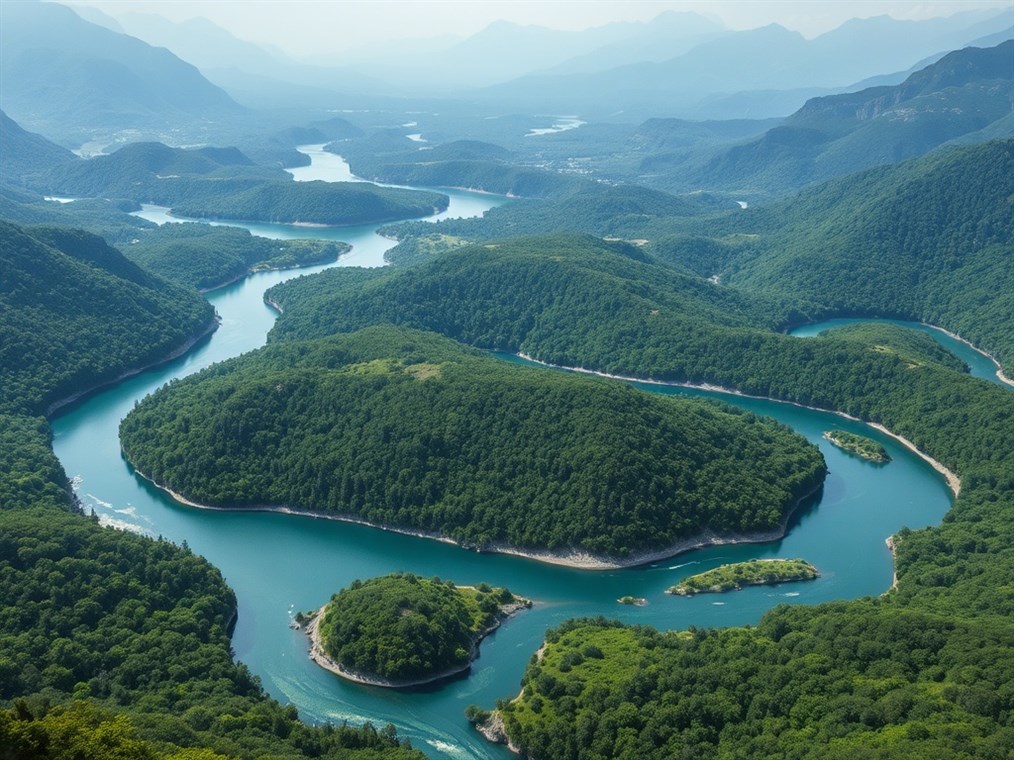
Where Does the Whitewater River End? It’s Trickier Than You Think!
FactsWhere Does the Whitewater River End? It’s Trickier Than You Think!
Ever wondered where a river actually ends? Sounds simple, right? Well, with the Whitewater River, it’s not quite that straightforward. Turns out, there’s more than one river with that name flowing across the US! So, which Whitewater are we talking about? Let’s dive in and trace the journeys of a few of these watery namesakes to their ultimate destinations.
California’s Whitewater: A Desert Thirst Quencher
Probably the most famous Whitewater River snakes through Southern California. Picture this: it all starts way up high in the San Bernardino Mountains. We’re talking snowmelt from Mount San Gorgonio, a staggering 11,499 feet up! The early Spanish explorers called it “Agua Blanco” – White Water – and you can see why. The water’s kind of milky, thanks to all the silicate and lime sediments swirling around.
This Whitewater carves its way for about 28 miles into the Coachella Valley. Along the way, it picks up water from the North, Middle, and South Forks. It’s a vital corridor for wildlife, connecting the San Bernardino and San Jacinto Mountains. Think California Spotted Owls, Nelson’s Bighorn Sheep, and even the Arroyo Toad – all calling this area home.
But here’s the kicker: where does it end? Well, technically, the California Whitewater River flows into the Salton Sea, a huge, landlocked lake smack-dab in the Colorado Sonoran Desert. However, most of the time, you won’t see a raging river flowing into the sea. The river often flows underground, especially as it hits the Coachella Valley. It’s like the desert floor is drinking it up! This actually helps replenish the Coachella Valley aquifer – a crucial water source for the area. Only during those rare, crazy flood events does surface water actually reach the Salton Sea. It’s a bit of a disappearing act, really.
Midwest Whitewater: Joining the Great Miami
Now, let’s hop over to the Midwest, where another Whitewater River flows through southeastern Indiana and southwestern Ohio. This one’s a good stretch at 101 miles long, eventually feeding into the Great Miami River. This Whitewater gets its start a little differently. Instead of springing from a mountain, it’s formed by the merging of the West Fork and the East Fork at Brookville, Indiana.
The West Fork, which the maps consider the main part, starts in Randolph County, Indiana, and meanders for almost 70 miles before meeting the East Fork. The East Fork kicks off in Darke County, Ohio, traveling about 57 miles to Brookville. From there, the combined Whitewater heads southeast into Ohio.
So, the grand finale? This Whitewater River joins forces with the Great Miami River, which itself is a tributary to the mighty Ohio River.
Minnesota’s Whitewater: A Northern Contribution
Don’t forget the Whitewater River of Minnesota! This smaller river, only about 16.6 miles long, contributes to the Upper Mississippi River. It winds through the scenic Driftless Area of Minnesota, eventually reaching its mouth in Wabasha County, near Weaver. The North and Middle Forks join at Elba, Minnesota, to form the main stem, and the South Fork adds its flow just downstream.
The final stop? You guessed it – the Whitewater River in Minnesota empties into the Upper Mississippi River.
Other Whitewaters Out There
While those are the big names, keep in mind there might be other, lesser-known “Whitewater Rivers” sprinkled around. For instance, there’s the Whitewater River Run in Utah, flowing into Sixth Water Creek.
The Takeaway
So, the next time someone mentions the Whitewater River, remember it’s not a one-size-fits-all answer! Each of these rivers carves its own path, plays a vital role in its local environment, and has its own unique ending. Whether it’s vanishing into the Salton Sea, merging with the Great Miami, or joining the Mississippi, each Whitewater has a story to tell. It’s a reminder that even something as seemingly simple as a river’s end can have a few surprising twists and turns!
You may also like
Disclaimer
Categories
- Climate & Climate Zones
- Data & Analysis
- Earth Science
- Energy & Resources
- Facts
- General Knowledge & Education
- Geology & Landform
- Hiking & Activities
- Historical Aspects
- Human Impact
- Modeling & Prediction
- Natural Environments
- Outdoor Gear
- Polar & Ice Regions
- Regional Specifics
- Review
- Safety & Hazards
- Software & Programming
- Space & Navigation
- Storage
- Water Bodies
- Weather & Forecasts
- Wildlife & Biology
New Posts
- Diving Deep into Tangerine: More Than Just a Sunny Locale
- Jamaica Backpack Daypack Pockets Shopping – Review
- TEOYETTSF Climbing Backpack Multifunction Military – Buying Guide
- The Curious Case of Cavendish’s Classroom: Where Did This Science Star Study?
- Dragon Backpack Insulated Shoulder Daypack – Buying Guide
- ROCKY Hi-Wire Western Boots: A Rugged Review After a Month on the Ranch
- Vertical Curbs: More Than Just Concrete Barriers
- Regatta Modern Mens Amble Boots – Honest Review
- YMGSCC Microfiber Leather Sandals: Beach to Boardwalk, Did They Hold Up?
- Tangier: More Than Just a Backdrop in “Tangerine”
- DJUETRUI Water Shoes: Dive In or Doggy Paddle? A Hands-On Review
- Barefoot Yellow Pattern Hiking 12women – Is It Worth Buying?
- Koa Trees: How Fast Do These Hawaiian Giants Really Grow?
- DDTKLSNV Bucket Hat: Is This Packable Sun Shield Worth the Hype?